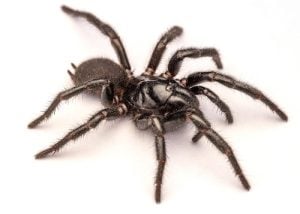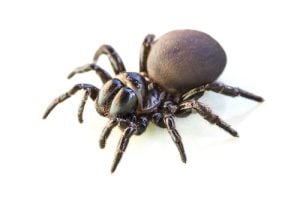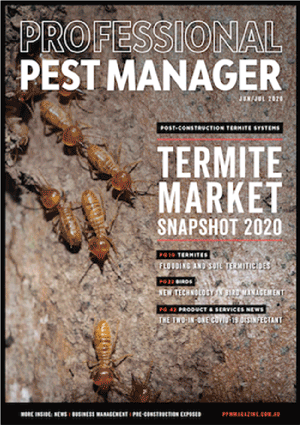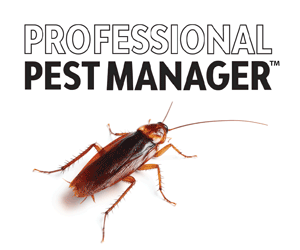Funnel-web spiders often given homeowners cause for concern when found in the garden or indoors. Here we take a look at their key behaviours, identification and treatment.
Funnel-web spiders are perhaps the most infamous of Australian spiders. Certainly, with their highly venomous and painful bite there’s good reason for this status, although there have been no deaths since the anti-venom became available in 1981. However, there are a number of species of funnel-web spider. Indeed, scientists have recently determined that the funnel-webs found in Sydney are not a single species, the Sydney funnel-web spider, but three distinct species.1 Here we review the types of funnel-web spiders found on the east coast of Australia.
Sydney funnel-web spider
The Sydney funnel-web spider, Atrax robustus, is the principle funnel-web spider in Sydney, and the species to which all historical deaths have been apportioned. However, looking at the morphological differences and gene sequencing, scientists have now confirmed there are three different species in the Sydney area. In addition to the Sydney funnel-web, which is found throughout the Sydney and up to the Central Coast, there is also the Southern Sydney funnel-web, Atrax montanus, which is most commonly found in the Blue Mountains and Western Sydney. There’s also the newly discovered Newcastle funnel-web, Atrax christenseni.
Newcastle funnel-web spider
The Newcastle funnel-web was identified as a new species as part of this study. It was suspected that this spider was different to the Sydney funnel-web, based purely on size. A recent specimen handed in to the Australian Reptile Park for milking had a leg span of nearly 10 cm! Sydney funnel-web spiders rarely have a leg span greater than 8 cm.
Tree funnel-web spiders
Although the Newcastle funnel web may have the largest recorded leg span of a funnel web, the largest funnel web based on body size is the northern tree-dwelling funnel web, Hadronyche formidabilis. A suitable name given it has a body length of up to 5 cm. These tree funnel-web spiders can be found in wet forests from the Hunter Valley area up to Southern Queensland. They hide in holes in trees and have been found up to 30 m above the ground. The smaller, southern tree-dwelling funnel-web, Hadronyche cerberea, is found in eastern NSW, south of the Hunter Valley, including the Sydney area.
Other funnel-web spiders
As the reclassification of the funnel-web spiders found in Sydney has demonstrated, there is much still to learn about funnel-webs and most of the species are poorly characterised. However, currently the 38 species of identified funnel-web spiders are classified into three genera: Atrax, Hadronyche and Illawarra.
Although the Atrax species may be more well known, across the east coast of Australia the largest number of species belong to the Hadronyche genus. The Hadronyche funnel-webs are a diverse group of spiders and cover a wider distribution than species in the Atrax genus. The Hadronyche genus has been split into five groups: cerberea, infensa, adelaidensis, ‘lamington’ and anzes. Notably the cerberea group includes the tree-dwelling funnel-webs and the adelaidensis group describes the only trapdoor-building funnel web spiders (found in SA).
The Illawarra genus only includes a single species, Illawarra wisharti, which is found in the wet temperate forests in the Illawarra region (NSW).
Where are funnel-web spiders found?
Funnel web spiders are found along the east coast of Australia, from Queensland down to Tasmania, including New South Wales, the ACT and South Australia. However, no single species is present across the entire range and indeed many species are only found in relatively small areas.
The Atrax species are only found in the Sydney area and around Newcastle. Apart from the northern tree-dwelling funnel web, which is found in New South Wales and Queensland, spiders in the cerberea group of Hadronyche are found south of the Hunter River down to Tasmania. The infensa group is only found north of the Hunter River into southeast Queensland. The smaller groups in the Hadronyche genus have very limited distribution – adelaidensis is only found in the Gulf region of South Australia, the ‘lamington’ group is only found in small areas of rainforest in New South Wales and Queensland, and the anzes group is only found in the rainforests north of Cairns (QLD).

Funnel webs tend to live in moist forest regions along the east coast and also dried open forests along the western slopes of the Great Dividing Range. However, ground-dwelling species all build their burrows in moist, yet well-draining soils, in cool sheltered areas. For example, in Sydney, the hotspot for funnel webs is in the bush areas of Hornsby and the Northern Beaches, and in the foothills of the Blue Mountains, with numbers lower in the flatter, drier areas in between. In residential areas, they will be more likely found in and around homes near these bush areas. They will build their burrows in gardens, typically in native gardens and under rocks and logs, and occasionally in lawns.
Identifying funnel-web spiders?
With the distribution of most funnel-web spider species being quite limited, in most locations there may only be one or two species present, making identification relatively easy. In funnel-web hotspots, several species may be present. For example in Sydney there are three common species: the Sydney funnel-web Spider, the Southern Sydney funnel-web and the southern tree-dwelling funnel-web spider. However, the Blue Mountains funnel-web is relatively more common in the Blue Mountains and in the south and west areas of the Sydney basin.


A number of characteristics are common across funnel-web spiders and can be used to distinguish them from other large, black spiders. Funnel-web spiders large-bodied, ranging in colour from brown to black, with large jaws and fangs, and a glossy almost hairless carapace (the hard plate behind the head, joining the abdomen). Female funnel webs are more heavily bodied with relatively shorter legs than the male spiders. Their eyes are closely grouped, they have four obvious spinnerets and the males have a mating spur on their second pair of legs. They can be distinguished from mouse spiders, which have a more bulbous head and jaw, and eyes spread across the front of the carapace. Mouse spiders also have short spinnerets and the males have no mating spurs on their legs.
Distinguishing between the different species of funnel-web is a bit more problematic and is often a job for the experts. However, the Atrax species have longer spinnerets than the other genera and the mating spur on the Atrax species is longer and more obvious than that of the other genera. Although colour is not always the best distinguishing feature, tree-dwelling funnel webs will often be dark brown in colour, sometimes with a dark purple tinge to their abdomen.
Managing funnel-web spiders
A large part of managing the risk of a potential funnel-web encounter is around educating homeowners in funnel-web-prone areas. The main education point is around bite avoidance. Humans are at greatest risk of a funnel web encounter in autumn when the males go wandering looking for a mate. Well-fitted doors and insect screens will help prevent wandering males entering buildings. Instructing the owner to not leave shoes outside and clothes/shoes on the floor inside will also help minimise interactions. Getting into the habit of shaking out shoes is a good idea.
In terms of a pest treatment, spraying around the building perimeter can help, spraying one metre up the wall and one metre out. However, funnel-web spiders are large and may pick up a lethal dose of insecticide, but even if they do, they can still make it inside the building before the insecticide takes effect.
If the customer is in a known funnel-web area and they are experiencing a number of wandering male funnel web spiders, a thorough inspection of their property is required, focusing on likely burrow locations. Direct treatment of any funnel web burrows will dent the population, but even if all burrows are located, funnel webs can easily move in from neighbouring properties.
1 Loria, S.F et al. (2025). The world’s most venomous spider is a species complex: systematics of the Sydney funnel-web spider (Atracidae: Atrax robustus). BMC Ecol Evo 25, 7 (2025). https://doi.org/10.1186/s12862-024-02332-0


